On this page:
What is the public realm?
The public realm comprises spaces and places that are open and freely accessible to everyone, regardless of their economic or social conditions. These spaces can include streets, laneways and roads, parks, public plazas, waterways and foreshores.
Public realm structure delivers the location of and connection to destinations and activities. It includes layout and detailed design to support the function and amenity of streets, public spaces, public transport access and the interface between the public realm and private property.
While the overall urban structure may be enduring, the purpose and detailed arrangement of public spaces may change over time.
Why is it important?
The public realm provides a space for people to be free to access, to move about and to enjoy recreation. It enables people to carry out their daily business, to engage in activities or meet with others or simply to be. The public realm must be attractive, inclusive and safe to be in. An inhabited and well maintained public realm feels safe and encourages people to use spaces.
Objective 1.5.1: ensure a public realm structure where the movement network and the land uses support each other
- Locate local walking destinations and activities along main pedestrian streets and paths.
Tip: local walking destinations can include railway stations, bus and tram stops and interchanges, shops, schools parks, recreation and community facilities.
- Provide for a level of active frontage and lot access appropriate to the street function and building use patterns.
Tip: level of active frontage is reduced where vehicle access to narrow lots is via its street frontage. Driveways and crossovers reduce street activation and compromise pedestrian safety. See Element 5 Buildings. - Co-locate public transport nodes with active uses and busy public spaces.
Tip: active uses and public spaces can attract other people to use the public transport node. This helps increase the numbers of people using the area and improves security, particularly at night.
- Locate active, non-residential uses at ground level at the interface with major public transport nodes.
Tip: railway stations and major bus and tram interchanges generate many vehicle movements and operate from early morning to late night. Active commercial uses can benefit from the passing pedestrians and this contributes to safety in the area
- Where a railway station or a public transport interchange interfaces with a public space, provide active uses at ground level at the station or interchange interface with the public space.
Objective 1.5.2: ensure the public realm structure provides for accessible, safe and conveniently located public spaces.
Public spaces provide opportunities for active and informal recreation. The location and context of public spaces within the urban structure is critical to a space’s success.
Public space that has poor access, or is located away from the community it serves, will not be well used.
- Create public spaces where the local catchment has sufficient potential users to activate the space.
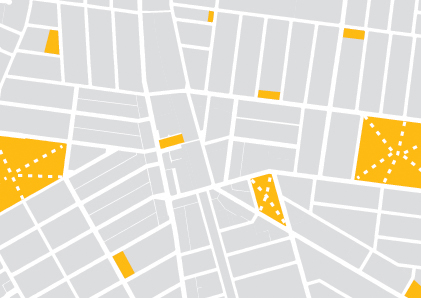
Tip: a walkable catchment to a public space varies with the public space type and the user. A local park catchment distance is shorter for a child or older person than for other users. A plaza lunch place may need to be within five minutes’ walk of a workplace to be attractive. - Provide for a variety of parks and public spaces, for informal and active recreation, located within a 400m walking distance from dwellings, workplaces, schools and shops.
Tip: 400m is a five minute walk.
- Locate public spaces where they can be connected to their surrounding area via pedestrian priority streets and paths.
Tip: public spaces are used if they are convenient and safe to access.
Objective 1.5.3: ensure the public realm structure provides for suitably-sized, comfortable and purposeful public spaces
The size and dimensions of a public space affect its possible uses and safety in terms of informal surveillance from the surrounding area.
Large public spaces can feel uninhabited and lonely, even overwhelming and threatening. Conversely, a small space may feel comfortable for quiet uses but not be a functional size for some active uses.
- Provide the number and types of public spaces that meet local needs.
Tip: a strategic planning process can identify and establish local needs and the appropriate type and size of public space to serve the community’s needs.
- Create public spaces of sufficient size to accommodate desired activities.
Tip: often the most popular and cared-for plazas and parks are compact and intimate.
Objective 1.5.4: ensure a public realm structure where streets support the amenity and function of neighbourhoods
- Make the main streets sufficiently wide to serve their function in the movement network and as a public place, and to accommodate services infrastructure.
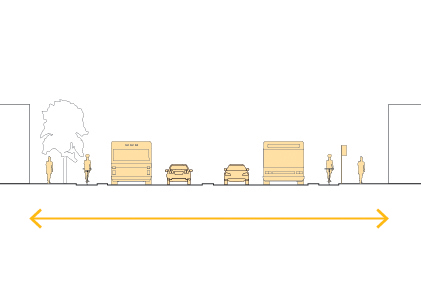
Tip: a street may need to accommodate public transport lanes and stops, pedestrians, cyclists, vehicles as well as accessible utilities infrastructure and service verges. - Where a street functions as an activity centre main street, provide block lengths and street widths to accommodate on-road public transport vehicles and accessible public transport stops.
- Set the street width in relation to the future building height and setback distance so as to allow daylight and winter sun access to key public spaces within streets.
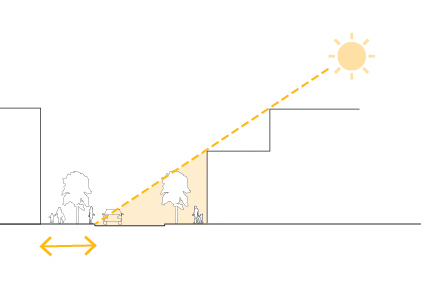
Tip: in some situations, creating shaded streets may improve comfort levels in hot weather. A strategic planning process can identify and establish key public spaces. - Provide space within the street for trees, landscaping and to accommodate social activities and utility infrastructure.
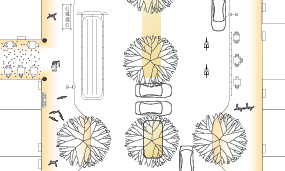
Tip: streets can be used for informal socialising and recreation, outdoor dining, street vendors, public transport waiting facilities, infrastructure services and street furniture. See Element 6 Objects in the public realm. - Where lots front pedestrian priority streets or are 6m or less in lot width, provide rear vehicle access to off-street parking.
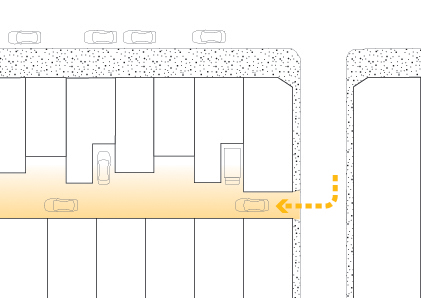
Tip: where narrow lots have vehicle access from the front, car parking access may dominate the street interface, while crossovers may reduce pedestrian safety. - Provide commercial lots with service access lanes or service courts separated from pedestrian access
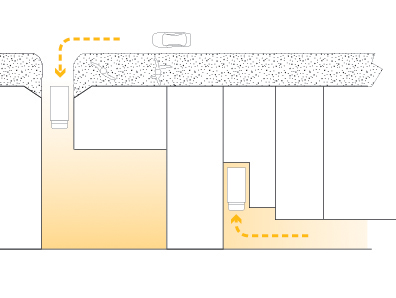
Tip: providing service lanes and service courts in commercial premises ensures pedestrians are safely separated from vehicles.
Objective 1.5.5: ensure the public realm structure provides high amenity and safe interfaces between different uses
Interfaces occur between different land uses, or a new and an existing neighbourhood.
- Where lots border a public open space, provide an active frontage toward the public open space.
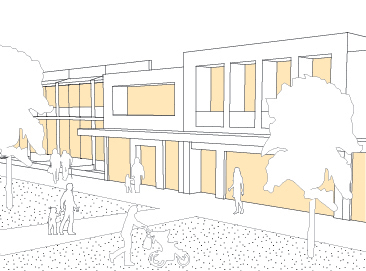
Tip: public spaces bounded by blank rear or side fences limit the opportunity for informal surveillance and reduce security for public space users and for properties bordering the public space. See Element 3 Public spaces. - Locate compatible uses facing each other across a street.
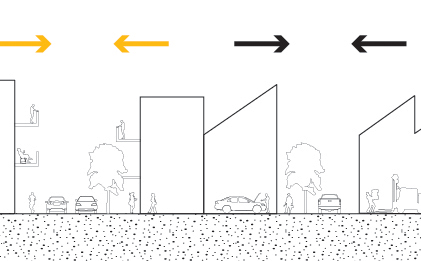
Tip: amenity and safety impacts can arise where potentially incompatible uses, such as industrial and residential uses, face each other across a street. - Locate the transition between incompatible uses along rear boundaries of lots.
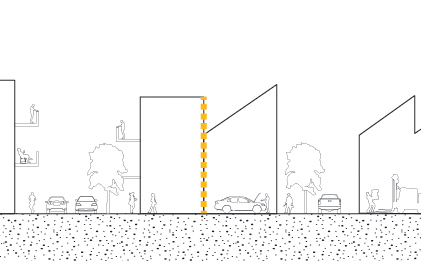
Tip: place land use zoning boundaries along rear lot boundaries rather than street frontage boundaries. A rear boundary wall can provide a buffer between incompatible uses and the amenity of the street is safeguarded.
Objective 1.5.6: ensure a well-managed, high amenity public realm
- The public realm has many stakeholders and is managed by a number of agencies, each with different responsibilities and interests. This adds to the complexity of developing and managing a successful place.
- Develop public spaces, civil infrastructure and streets to a standard acceptable for ongoing maintenance and management.
Tip: the local council standards and materials should be met for adoption and for ongoing management of public spaces.
- Establish a an integrated management agreement for a precinct to coordinate the maintenance and repair program for the public realm.
Tip: for example, regularly maintain landscaping and public facilities, and when repairing paving, also replant missing street trees.
- Where neighbourhoods experience increased residential densities, review the amount and type of public open space and street space to meet the local community’s needs.
Tip: periodic reviews of use and density pattern changes and urban infrastructure performance will assess the need for intervention. Structure planning can assist in managing this change.
Page last updated: 19/06/23